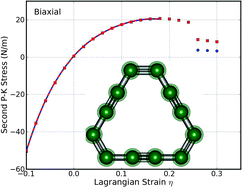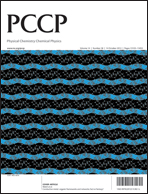Mechanical properties of graphyne monolayers: a first-principles study
Abstract
We investigated the mechanical properties of graphyne monolayers using first-principles calculations based on the Density Functional Theory. Graphyne has a relatively low in-plane Young's modulus (162 N m−1) and a large Poisson ratio (0.429) compared to


 Please wait while we load your content...
Please wait while we load your content...